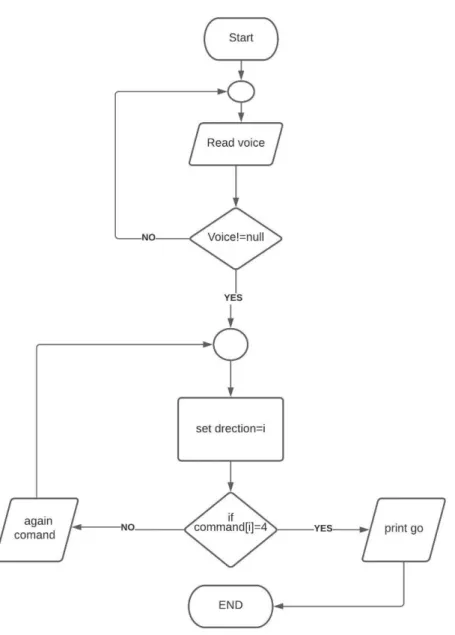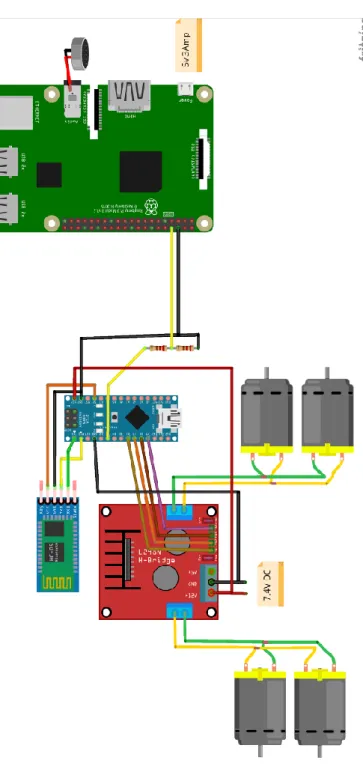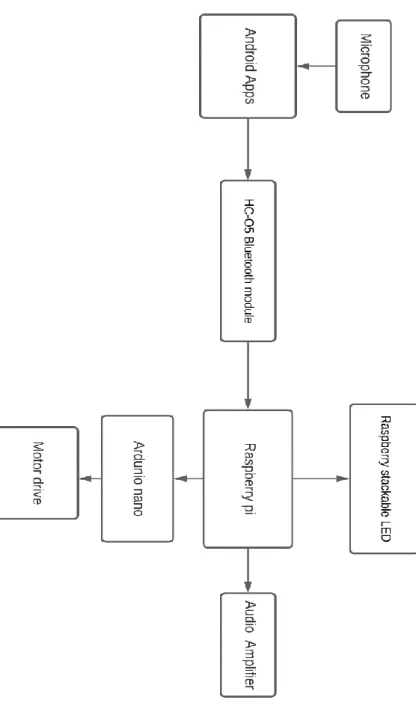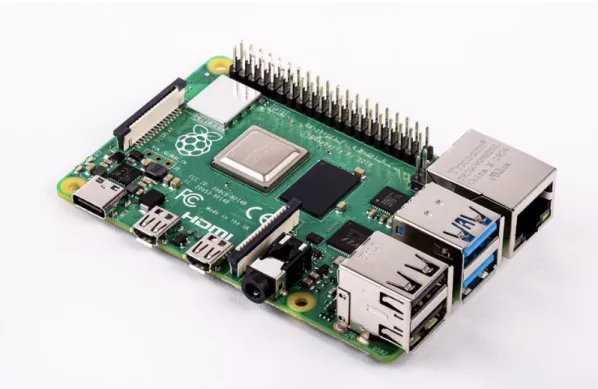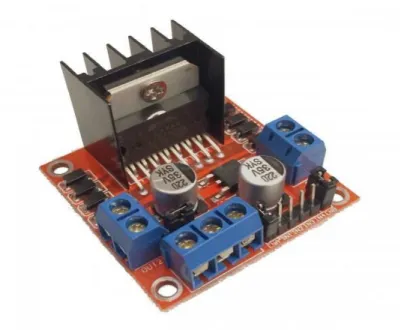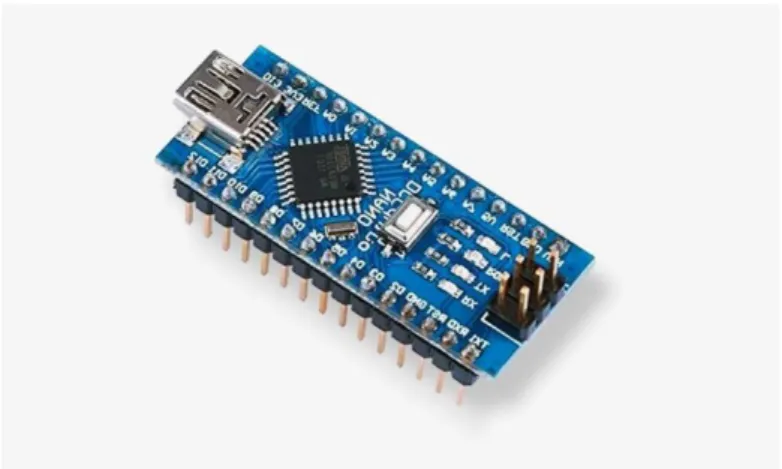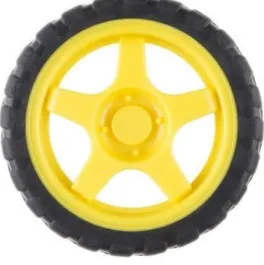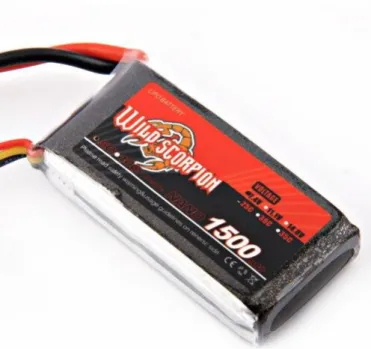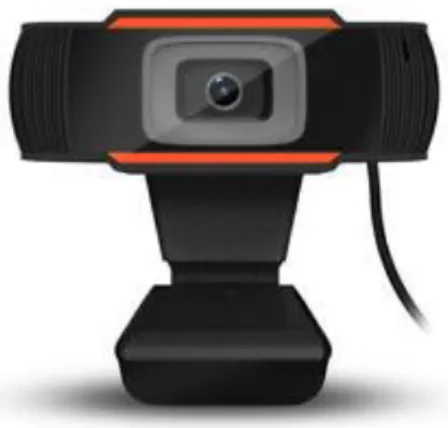©Daffodil International University
BY
Md. Abdul Hasib ID: 171-15-1474
Subrata Bir ID: 171-15-1448 Bakibillaha Pavel
ID: 171-15-1502
This Report Presented in Partial Fulfilment of the Requirements for the Degree of Bachelor of Science in Computer Science and Engineering.
Supervised By Ohidujjaman Senior Lecturer Department of CSE
Daffodil International University Co-Supervised By
Md. Sabab Zulfiker Lecturer
Department of CSE
Daffodil International University
DAFFODIL INTERNATIONAL UNIVERSITY DHAKA, BANGLADESH
JANUARY 2021
©Daffodil International University ii
APPROVAL
This Project titled “Facial Recognition robot with voice control by smartphone”, submitted by Md. Abdul Hasib, ID: 171-15-1474, Subrata Bir, ID No: 171-15-1448 and Bakibillaha Pavel ID: 171-15-1502 to the Department of Computer Science and Engineering, Daffodil International University has been accepted to be satisfactory in order to complete the partial fulfilment of the requirements for the degree of Bachelor of Science in Computer Science and Engineering and approved as to its style and contents. The presentation has been held on 14th Jan, 2021.
BOARD OF EXAMINERS
Dr. Touhid Bhuiyan Chairman
Professor and Head
Department of Computer Science and Engineering Faculty of Science & Information Technology Daffodil International University
Dr. S. M. Aminul Haque Internal Examiner
Assistant Professor & Associate Head
Department of Computer Science and Engineering Faculty of Science & Information Technology Daffodil International University
Ohidujjaman Internal Examiner
Senior Lecturer
Department of Computer Science and Engineering Faculty of Science & Information Technology Daffodil International University
Dr. Mohammad Shorif Uddin External Examiner
Professor
Department of Computer Science and Engineering Jahangirnagar University
©Daffodil International University iii We hereby declare that, this project has been completed by us under the supervision of Ohidujjaman, Senior Lecturer, Department of CSE at Daffodil International University.
We also declare that neither this project nor any part of this project has been submitted to anywhere else with a view to achieve any degree or diploma.
Supervised by:
Ohidujjaman Senior Lecturer Department of CSE
Daffodil International University
Co-Supervised by:
Md. Sabab Zulfiker Lecturer
Department of CSE
Daffodil International University
Submitted by:
Md. Abdul Hasib ID: 171-15-1474 Department of CSE
Daffodil International University
Subrata Bir ID: 171-15-1448 Department of CSE
Daffodil International University
Bakibillaha Pavel ID: 171-15-1502 Department of CSE
Daffodil International University
©Daffodil International University iv
ACKNOWLEDGEMENT
We, at first, would like to express our heartiest thanks and gratefulness to almighty God for His divine blessing that made us possible to complete the final year project with mental ecstasy.
We are really grateful and whishing our indebtedness to our profound Supervisor Ohidujjaman, Senior Lecturer, Department of CSE Daffodil International University, Dhaka. Deep Knowledge. He has shown his keen interest in the field of “Algorithm and Artificial Intelligence” to carry out this project. His endless patience, wisdom, scholarly guidance, continual encouragement, constant and energetic supervision with constructive criticism, valuable advice, reading many inferior drafts and correcting them at all stage have made it possible to complete this project to meet everyone’s expectation.
We would also like to express our heartiest gratitude to Dr. Syed Akhter Hossain, Professor and Head, Department of CSE, for his kind help to complete our project and also to other faculty member and all the staffs of CSE department of Daffodil International University.
Then, we would like to thank our entire course mate in Daffodil International University, who took part in this discussion while completing the course work.
And finally, we must acknowledge with due respect the constant support, patients and wholehearted prayers of our parents.
©Daffodil International University v
ABSTRACT
Regarding the development of modern technology, we are not only using the machine but also, we are connected with it in so many ways. For different reasons, the products which are producing from software industries is not significantly gratifying the customers. We require significant change in the context of what we currently producing. The change is essential not only in software based documentation but also in hardware, which will be effective regarding what the customer is required. Indeed, it has to be very prudent, effective, and more productive than ever before. The most sensible thing in the world today is the smartphones that we all have. The dependency towards the smartphones is incalculable, moreover, we are living our every day with it. Imagine, how fantastic it would be if a project can be developed, which would be robot based on hardware and also perform a number of intellectual tasks through the assist of a smart device. The robot would actually be able to perform the tasks through simple voice recognition system including wireless connection.
This research is all about the procedure and the knowledge regarding a robot that performs Facial Recognition with a voice control mechanism by a smart device, voice controller via smartphone.
©Daffodil International University vi
TABLE OF CONTENTS
CONTENS PAGE
Board of examiners ii
Declaration iii
Acknowledgements iv
Abstract v
Figure list viii
CHAPTER 1: INTRODUCTION
1-21.1 Introduction 1
1.2 Motivation 1
1.3 Objective 2
1.4 Output of the project 2
CHAPTER 2: BACKGROUND
3-42.1 Introduction 3
2.2 Related Works 3
2.3 Comparison between studies 3
2.4 Scope of the problem 4
2.5 Challenges 4
CHAPTER 3: REQUIREMENT SPECIFICATION
5-83.1 Process Diagram 5
©Daffodil International University vii
3.3 Block Diagram 7
3.4 Descriptions of Robotic Parts 8
CHAPTER 4: PROGRAM COMPILATION
14-15 4.1 Hardware and Software Requirement Specification 144.2 Programming Language 14
4.3 Integrated Development Environment 15
CHAPTER 5: IMPLEMENTAION AND TESTING
16-185.1 Implementation of Robotic Vehicle 16
5.2 Implementation of Android Application 18
CHAPTER 6: CONCLUTION AND FUTURE SCOPE
1-36.1 Discussion and Conclusion 19
6.2 Future Work 19
REFERENCES
20APPENDIX
21-30PLAGIARISM
31©Daffodil International University viii
Figure list
FIGURES PAGE NO
Figure 3.1: Process Diagram 5
Figure 3.2: Design of Circuit Diagram 6
Figure 3.3: Block Diagram 7
Figure 3.4.1: Raspberry pi 8
Figure 3.4.2: L298n Motor Drive 9
Figure 3.4.3: DC Motor
Figure 3.4.4: MPI3508 3.5 HDMI LCD
9 10 Figure 3.4.5: Audio Amplifier
Figure 3.4.6: Arduino Nano Figure 3.4.7: Wheel
10 11 11 Figure 3.4.8: USB Webcam
Figure 3.4.9: 7.4V rechargeable Battery.
Figure 3.4.10: HC-05 BT Module.
Figure 3.4.11: 32 GB SD card.
Figure 5.1: Robotic vehicle
12 12 13 13
©Daffodil International University 16
Facial Recognition robot with voice control by smartphone
BY
Md. Abdul Hasib ID: 171-15-1474
Subrata Bir ID: 171-15-1448
Bakibillaha Pavel ID: 171-15-1502
This Report Presented in Partial Fulfilment of the Requirements for the Degree of Bachelor of Science in Computer Science and Engineering.
Supervised By Ohidujjaman Senior Lecturer Department of CSE
Daffodil International University Co-Supervised By
Md. Sabab Zulfiker Lecturer
Department of CSE
Daffodil International University
DAFFODIL INTERNATIONAL UNIVERSITY DHAKA, BANGLADESH
DEC 8 2020
©Daffodil International University 1
INTRODUCTION
1.1 Introduction
This modernized world requires everything that are automated. People require everything performed in an effective way that would be physical. For this kind of work, we need some kind of robot with the capacity and abilities of facial recognition than talk the name of person which one front of the camera with speech recognition then control the robot direction like: Left, right, etc. The most prominent thing is that the establishment of communication is essential. In the purpose of making the project natural and user friendly we have obtained very simple steps that is considered to be very remote. Otherwise, a robot can be used as a cross-platform device that establish communication with human. We all know the smartphone we have in our hand, is really a handy device.
1.2 Motivation
For a hardware-based work there are many challenges we face my problems. First dilemma was to choose a suitable Arduino, Raspberry Pi. There were many of those. We have chosen raspberry pi for its low power consumption, durability, cheapness and availability [1]. Then there was another challenge to fix the exact project. How it will understand natural languages.
After some research we have decided following features to keep in our robot:
1. We will make a robotic vehicle that can run or move.
2. It will detect the gesture.
3. It understands our languages
4. It can speak the name after face detect.
©Daffodil International University 2 1.3 Objectives
Our objective is our robotic vehicle can recognize voice command and give response so that we can easily interact with that vehicle. If we noted our objectives then we can describe it given below:
a. Robotic vehicle that can run and move.
b. Speech recognition program.
c. It can speak the name after face detect of the person.
d. Understand Natural Language e. It can recognize face.
1.4 Output of the project
a. Control device by voice command.
b. Android application can understand Natural Language.
c. Android application is the medium of vehicle and user.
©Daffodil International University 3
BACKGROUND
2.1 Introduction
In the present modern world of automation, we want every possible task to be automated with effectiveness and efficiency. The basic thing is that the implementation of the project is essential. The most important thing is that the reduction of time is the principal purpose of a project. And to turn this dream into reality, we must need a robot that will have the ability of speech recognition. Here, one important task is to communicate with the robot to give it our commands upon which it will respond. For the implementation purpose of the project, the control of gesture and speaking are included.
Also, a robot can be used as a cross-platform device that establish communication with human. A smartphone is considered to be a proficient device. The valuable commands will be provided via a smartphone and eventually change it to Arduino to maintain a number of specific actions on the basis of our given command.
2.2 Related Works
This project is materialized with Raspberry pi, Arduino Nano and smartphone. Several projects are related with our project. But in some case, they are different like some of them are just controlled by android. or Some of them don't have Artificial intelligence.
1. In 2016, Vineeth Teeda, K.Sujatha, Rakesh Mutukuru spoke to a project where they wanted a system where Arduino will be controlled via voice. Where on board mic will take the input [2].
2. In 2017 Shivanand proposed a project that also based on Arduino and android. It’s also controlled by android app. They also used 4wd car chasing [3].
2.3 Comparison between studies
This project focused on how we can implement artificial intelligence in any micro controller and control it by our own natural gesture or words we can see from our related work section previous projects were costly and less user friendly.
©Daffodil International University 4 2.4 Scope of the problem
We can get the idea from our project. This kind of projects has many applications. Now a days it is very important to use AI in our every particular work and we want to communicate with our machine by our natural languages. Then we can get the idea that idea that scope is not limited. Like we can use for education, medical purpose etc.
2.5 Challenges
In this project there are some challenges that we have to face:
a. Size problem b. Weight problem c. Power problem
d. Android app development in many sector e. Hardware and software combination.
©Daffodil International University 5
REQUIREMENT SPECIFICATION
3.1 Process Diagram
Figure 3.1: Process Diagram
©Daffodil International University 6 3.2 Design of Circuit Diagram
Figure 3.2: Design of Circuit diagram.
©Daffodil International University 7 3.3 Block Diagram
Figure 3.3: Block Diagram
©Daffodil International University 8 3.4 Description of Robotic parts
3.4.1 Raspberry Pi
Raspberry pi is considered to be a single board microcontroller. It is the brain of our projects.
It can be used to control any hardware. We have connected all of our hardware with it. It’s an open source hardware licensed under LGPL or GPL [4]. Raspberry pi have default operating system (OS) default, a version of Linux. Storage type is MicroSDHC slot USB Mass Storage device for booting and memory is SDRAM [5].
Figure 3.4.1: Raspberry pi
©Daffodil International University 9 L298n motor drive normally used for control any motor. It can provide 5-35 dc voltage to our targeted hardware. We connect this drive to our Arduino and we connect 4 DC motor with it.
Figure 3.4.2: L298n Motor Drive.
3.4.3. DC Motor:
To run any wheel by electricity we need motor. To make this robot awe used 4 dc motor.
It is more suitable for robot than any other motor. Every motor need 3V voltage to run [6].
Figure 3.4.3: Gear Motor DC
©Daffodil International University 10 3.4.4. MPI3508 3.5 HDMI LCD:
We used LCD display to confirm the signal and texts which is sent to Arduino Nano via Raspberry pi. This MPI3508 LCD display can operate raspberry pi OS system.
Figure 3.4.4: MPI3508 3.5 HDMI LCD.
3.4.5. Audio Amplifier
Audio Amplifier can receive audio signal as like radio we used this module to call by the person name who are in front of the camera.
Figure 3.4.5: Audio Amplifier.
©Daffodil International University 11 Arduino Nano is normally used for control motor drive. To moving our motor forward, back, left and right. All of the wheel is connected in the motor drive.
Figure 3.4.6: Arduino Nano.
3.4.7. Wheel
To run any car wheel is needed. We used four wheels to run this car which is connected with four dc motor.
Figure 3.4.7: Wheel.
©Daffodil International University 12 3.4.8. USB webcam
We used web camera to detect face.
Figure 3.4.8: Webcam.
3.4.9 Battery
To run any electronics, we need power. To run our Arduino and motor drive, we needed 9v and for motor drive we used 2 9v battery. Totally we used 7.4v battery.
Figure 3.4.9: 3.7V rechargeable Battery.
©Daffodil International University 13 HC-05 BT Module is a Bluetooth module usually used for contact wirelessly between a short distances. We used this module in our project to connect our android with Arduino Uno.
Figure 3.4.10: HC-05 BT Module.
3.4.11 32 GB SD Card
A SD card or a Security Digital card is one which will store extra measures of data for us.
Using this card we installed a raspberry pi supported operating system. Inside this (OS) we have all data for running our project. Like face dictation code etc. it means all python code is inside this (OS) system.
Figure 3.4.11: 32 GB SD Card .
©Daffodil International University 14
CHAPTER 4
PROGRAM COMPILATION
4.1 Hardware and Software Requirement Specification 4.1.1 Hardware
To create this project, we used several modules then we connect them with Raspberry pi via USB cabal and Arduino Nano different pin. Number 4 pin is used for raspberry pi is connected or not .9, 10, 11, 12 is respectively used for motor drivers.
Here is a diagram of our Arduino and integration of all of the tools.
4.1.2 Software
Raspberry pi have (OS) so it support high level language and Arduino is an open source software for implementing code in Arduino. It is IDE. We write our Raspberry pi and Arduino’s code is here.
4.2 Programming Language
4.2.1 C
It is a medium level language is very important which have both feature of high-level and low- level programming language. We can write script for drivers and kernels. It also offers dynamic memory allocation. We use c for writing Arduino’s Nano code.
4.2.2 Java
We use programming language Java for create our android application. So, I think it very important for create Android Application. We all know google introduce a platform Android Studio to android developer which is very user friendly. There have two combine language Java and XML. So, java is the comfortable language for create Android application.
©Daffodil International University 15 Among all the text dependent markup language Extensible markup language is regarded as the most advanced one. XML tags generally detects data moreover the uses of arc is based on store and organize the data which are used to manifest the data description. XML code is use to create user interface of our Android Application. In the IDE Android Studio, we develop our Android Application. In Android Studio, XML is the language to crate interface.
4.2.4 Python
Python is a high label language .We use it for face recognition and dataset training .We use raspberry pi in our project it has its own operating system. So we can use this high level language easily. It work very appropriately.
4.3 Integrated Development Environment
4.3.1 Starter
As we said our robot is controlled by Raspberry pi based smartphone app. So, we developed an android app with android studio. Which is interfaced with Arduino. That’s why we also used Arduino Nano.
4.3.2 Android Studio
We are using Android Studio, which an IDE for developing operating system (android) based apps for Google. For many reasons’ android is very popular for many types of applications. Especially for wireless programming, socket programming. In this project we need a device to convert the natural languages to signal. Android app will do the trick.
First, we developed GUI for our android app. These are the pictures from android studio of our app’s interfaces.
Then we developed the apps code according to our functionality.
©Daffodil International University 16
CHAPTER 5
IMPLEMENTATION AND TESTING
5.1 Implementation of Robotic Vehicle
Figure 5.1: Robotic vehicle
©Daffodil International University 17 Raspberry pi works as a main brain. We controlled our project one side by it. And another is motor run. For this reason we needed Arduino Nano. So we developed a program in our Arduino software that will run our robot. Arduino will act as helper of the robot. On the other hand, we used smartphone app, it made by java. Our smartphone app will able to convert any natural signal to Arduino compatible signal.
In this case, the Android app will use Bluetooth module HC-05 for send the converted signal To Arduino Nano and exact serial no after that it go to Raspberry pi 4 no pin for check it connected or not. If it connected than it will help to move our robot. And Arduino Nano have particularly set in the Arduino program. In Android app, we used socket and some of activity override to take the voice command and send them to the Arduino.
Since Raspberry pi is the brain of our robot. And Arduino Nano will decide either our robot will move or not. It will also determine the direction of the movement of the robot. One the other hand Raspberry pi will do face recognition. When someone will in front of the camera than raspberry pi will help to detect this person face and call by this person name, who will be in front of the camera. For calling person name we used audio amplifier and small speaker or sound box. So for this reason we need train this robot by someone information or face data. We can easily create data set using this robot by manually. After create dataset we need to do train our robot after that it will ready for detect person. Also our robot can move in four directions respectively left, right, front and back. It can understand several commands like go forward, left, right, Back, Stop, etc. Like when we will say stop it will stop. As we said it has 4 wheels and 1 battery and battery is enough powerful to run its task. 7.4v is for our Arduino Nano and others are for the motor drive which runs the dc motor, as a result, our wheel moves.
©Daffodil International University 18 5.2 Implementation of Android Application
As we said, we developed an android app which can perform many important tasks. It can convert and languages to text then it can send it to the Arduino Nano to perform its particular action.
First, we have to connect a paired Bluetooth device. Then we will get our main interface. Here we can get a speak button. Then there will be a pop-up window that will take the audio and convert it to the text via google and internet. Here also have a button it called identify people.
©Daffodil International University 19
CHAPTER 6
CONCLUSION AND FUTURE SCOPE
6.1 Discussion and Conclusion
Our proposed system gives us the concept of using embedded system in a purpose where our daily life will be improved, easier, effective. Where we can use smartphone, Bluetooth, embedded system in a single purpose integrated.
Of Course, we could use more modern wireless technology like Wi-Fi in this type of project and on-board controller system.
6.2 Future Work
After completing this project, we can say that it was really a difficult task. There were many challenges. There are some features we didn’t add yet. Eventually we will add them. Following feature will be added in the future:
1. Grabbing hand 2. GPS
3. Obstacle detect 4. Online live control 5. More strong
©Daffodil International University 20
References
[1] https://en.wikipedia.org/wiki/Arduino
[2] https://www.ijeat.org/wp-content/uploads/papers/v5i6/F4684085616.pdf
[3] https://microcontrollerslab.com/voice-controlled-robot-arduino/
[4] "Getting Started: FOUNDATION > Introduction". Arduino.cc
[5] https://en.wikipedia.org/wiki/Arduino
[6] http://www.me.umn.edu/courses/me2011/arduino/technotes/dcmotors/motor-tutorial/
©Daffodil International University 21
APPENDIX A: RASPBERRY PI
Raspberry pi Code Demonstration:
©Daffodil International University 22
©Daffodil International University 23
©Daffodil International University 24
©Daffodil International University 25
©Daffodil International University 26
©Daffodil International University 27
©Daffodil International University 28
APPENDIX B: ARDUINO CODE
Arduino Code:
©Daffodil International University 29
©Daffodil International University 30
©Daffodil International University 31
